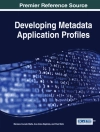Turn jumbles of numbers into graphics, insights, and answers with Excel
With Microsoft Excel, you can, well, excel at data analysis. And Excel Data Analysis For Dummies can help, with clear and easy explanations of the mountain of features for creating, visualizing, and analyzing data. Pivot Tables, charts, what-if analysis, statistical functions—it’s all in here, with examples and ideas for Excel users of all skill levels.
This latest edition covers the most recent updates to Excel and Microsoft 365. You’ll beef up your data skills and learn powerful techniques for turning numbers into knowledge. For students, researchers, and business professionals, Excel is the spreadsheet and data application of choice—and Dummies is the best choice for learning how to make those numbers sing.
- Learn how to use Excel’s built-in data analysis features and write your own functions to explore patterns in your data
- Create striking charts and visualizations, and discover multiple ways to tell the stories hidden in the numbers
- Clean up large datasets and identify statistical operations that will answer your questions
- Perform financial calculations, database operations, and more—without leaving Excel
Excel Data Analysis For Dummies is the go-to resource for Excel users who are looking for better ways to crunch the numbers.
สารบัญ
Introduction 1
Part 1: Getting Started with Data Analysis 5
Chapter 1: Learning Basic Data-Analysis Techniques 7
Chapter 2: Working with Data-Analysis Tools 31
Chapter 3: Introducing Excel Tables 55
Chapter 4: Grabbing Data from External Sources 77
Chapter 5: Analyzing Table Data with Functions 99
Part 2: Analyzing Data Using Pivot Tables and Pivot Charts 113
Chapter 6: Creating and Using Pivot Tables 115
Chapter 7: Performing Pivot Table Calculations 137
Chapter 8: Building Pivot Charts 161
Part 3: Discovering Advanced Data-Analysis Tools 181
Chapter 9: Dealing with Data Models 183
Chapter 10: Tracking Trends and Making Forecasts 203
Chapter 11: Analyzing Data Using Statistics 227
Chapter 12: Analyzing Data Using Descriptive Statistics 245
Chapter 13: Analyzing Data Using Inferential Statistics 261
Part 4: The Part of Tens 279
Chapter 14: Ten Things You Ought to Know about Statistics 281
Chapter 15: Ten Ways to Analyze Financial Data 293
Chapter 16: Ten Ways to Raise Your Pivot Table Game 303
Appendix: Glossary of Data Analysis and Excel Terms 317
Index 327
เกี่ยวกับผู้แต่ง
Paul Mc Fedries is the owner of Logophilia Limited, a successful technical writing firm. He has 25 years’ experience writing instructional computer books and is the author of over 100 books that have sold a combined 4 million copies worldwide.












